As a marathon runner who’s logged countless miles and a bit of a geek when it comes to optimizing websites for Google, I’ve spent years tweaking my gear to find what works best for long-distance runs. One question that pops up time and again—both on the trails and in online forums—is how to pick the right size hydration bladder for a marathon running backpack. It’s a decision that can make or break your race day, and I’ve been there, juggling between carrying too much water and risking dehydration. In this guide, I’ll share my insights on choosing the perfect hydration bladder size for a marathon, based on my own experiences, conversations with fellow runners, and some solid data. My goal is to help you find a setup that keeps you hydrated without weighing you down, whether you’re tackling your first 42.2K or chasing a personal best in 2025.

Why Hydration Bladder Size Matters for Marathons
Running a marathon is a test of endurance, strategy, and preparation. Your hydration system—whether it’s a handheld bottle, a belt, or a backpack with a hydration bladder—plays a huge role in how you feel at mile 20. A bladder that’s too small might leave you parched, especially if aid stations are sparse or you’re running in hot conditions. On the other hand, a bladder that’s too large adds unnecessary weight, slowing you down and sapping your energy. I learned this the hard way during a sweltering 2019 marathon when my 3-liter bladder felt like a brick by mile 15, leaving me cursing my over-enthusiastic packing.
The ideal bladder size depends on several factors: race conditions, your personal hydration needs, the availability of aid stations, and the backpack’s capacity. Let’s dive into how to choose the right size and what to consider to make your marathon as comfortable as possible.
Factors to Consider When Choosing a Hydration Bladder Size
Before picking a bladder, it’s worth understanding what influences your hydration needs. Over the years, I’ve narrowed it down to a few key elements that have guided my choices for races from urban marathons to trail ultras.
1. Race Distance and Aid Station Availability
A standard marathon is 42.2 kilometers (26.2 miles), typically taking 3-5 hours for most runners. Urban marathons, like the New York City Marathon, often have aid stations every 2-3 miles, offering water and sports drinks. In these cases, you might not need to carry much water. For example, during the 2023 Chicago Marathon, I carried a 1-liter bladder and refilled at stations, which was plenty for a 4-hour finish in mild weather.
Trail marathons, however, can be less predictable, with aid stations sometimes 5-10 miles apart. For these, a larger bladder (1.5-2 liters) is often necessary. I ran a trail marathon in Colorado last year, and the 7-mile gap between stations meant my 2-liter bladder was a lifesaver.
2. Weather and Temperature
Hot and humid conditions increase your fluid needs. According to the American College of Sports Medicine, runners lose about 0.5-1 liter of fluid per hour in moderate conditions, but this can double in heat. During a scorching summer race in Texas, I was sipping from my 1.5-liter bladder every 10 minutes to stay hydrated. Cooler races, like a fall marathon in Seattle, might only require 0.5-1 liter for the entire race if aid stations are frequent.
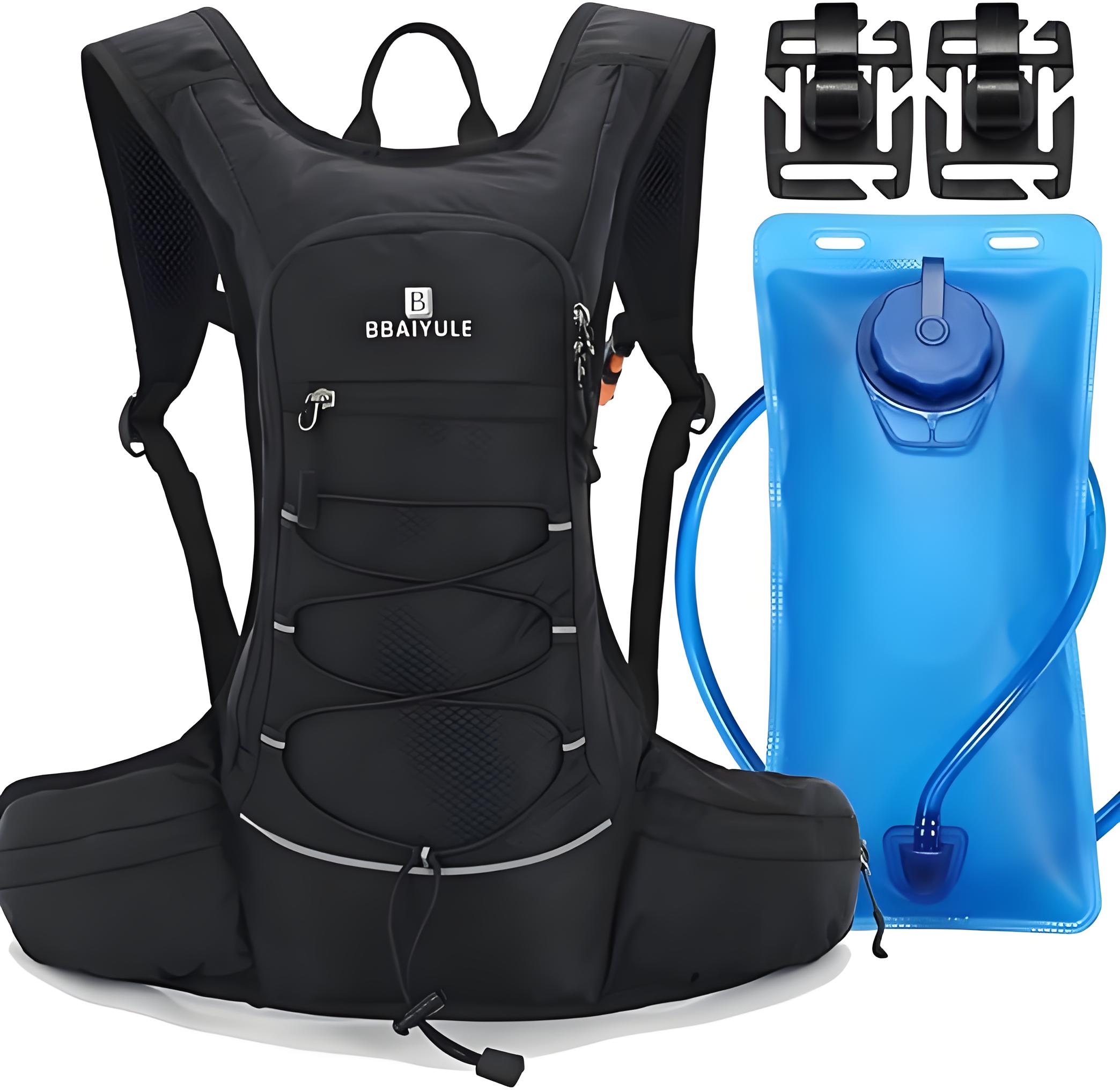
3. Your Personal Hydration Needs
Every runner is different. I tend to sweat heavily, so I need about 500-700 ml per hour in moderate conditions. Lighter sweaters or smaller runners might get by with less. To figure out your needs, try this trick I use: weigh yourself before and after a long training run. For every pound lost, you’ve lost about 500 ml of fluid. This helped me realize I was under-hydrating during early races, which explained my mid-race cramps.
4. Backpack Capacity and Fit
Your hydration backpack’s total capacity (in liters, referring to storage space) affects bladder size. Most marathon-specific packs, like the Salomon ADV Skin 5 or Ultimate Direction Marathon Vest, are designed for 5-12 liters of storage and typically accommodate 1-2 liter bladders. Larger bladders (3 liters) are better suited for ultra-marathons and bulkier packs. I once tried squeezing a 3-liter bladder into a 5-liter pack, and it was a nightmare—bulky, unbalanced, and uncomfortable.
5. Race Strategy and Pace
If you’re aiming for a sub-3-hour marathon, you’ll likely prioritize speed and minimal gear, leaning on aid stations and a smaller 0.5-1 liter bladder. For mid-pack runners like me (around 4 hours), a 1-1.5 liter bladder strikes a balance between self-sufficiency and weight. Slower runners or those walking parts of the course might opt for 1.5-2 liters to account for longer time on the course.
Recommended Hydration Bladder Sizes for Marathons
Based on my experience and feedback from running communities, here’s a breakdown of ideal bladder sizes for different marathon scenarios:
| Scenario | Recommended Bladder Size | Why It Works | Example Gear |
|---|---|---|---|
| Urban marathon, frequent aid stations | 0.5-1 liter | Lightweight, refills available every 2-3 miles | Salomon Active Skin 4, 1L bladder |
| Trail marathon, sparse aid stations | 1.5-2 liters | Covers longer gaps, supports self-sufficiency | Ultimate Direction Race Vest, 2L |
| Hot weather, high sweat rate | 1.5-2 liters | Accounts for increased fluid loss | Camelthru Trail 25k, 1.5L bladder |
| Cool weather, moderate pace | 1-1.5 liters | Balances weight and hydration needs | Nathan VaporKrar, 1.5L bladder |
0.5-1 Liter: Best for Fast Runners or Urban Races
A 0.5-1 liter bladder is ideal for urban marathons with frequent aid stations or for elite runners who finish in under 3 hours. These bladders are lightweight (typically 4-6 oz when empty) and fit snugly in compact vests like the Nathan HPL 020. I used a 1-liter bladder during the 2022 Boston Marathon, sipping small amounts between stations, and it felt perfect for a 3:45 finish in cool weather.
Pro tip: Pair a small bladder with soft flasks (e.g., HydraPak 500ml) in your vest’s front pockets for extra flexibility. This lets you carry water in the bladder and electrolyte drinks in the flasks.
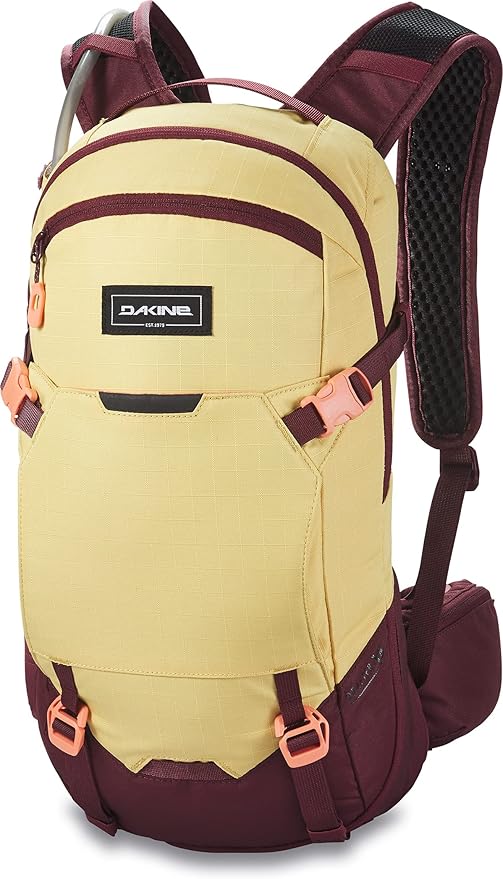
1.5-2 Liters: The All-Purpose Choice
For most marathon runners, a 1.5-2 liter bladder is the sweet spot. It provides enough water for 3-5 hours of running, even in trail races with fewer aid stations. During a 2024 trail marathon in the Blue Ridge Mountains, my 2-liter Camelthru bladder kept me hydrated for a 4.5-hour race with only two aid stations. The extra capacity gave me peace of mind, though I only used about 1.8 liters.
Pro tip: Look for bladders with quick-release tubes (like the Osprey Hydraulics 2L) for easy refilling at aid stations without removing the bladder from your pack.
3 Liters: Rarely Necessary for Marathons
A 3-liter bladder is overkill for most marathons unless you’re running an ultra-distance, in extreme heat, or on a course with no aid stations. These bladders add significant weight (up to 8 oz empty, plus 6.6 lbs of water when full) and require larger packs, which can throw off your balance. I made the mistake of using a 3-liter bladder for a flat marathon and ended up dumping excess water mid-race to lighten the load.
Pro tip: If you’re considering a 3-liter bladder, test it on long training runs to ensure it doesn’t affect your form or comfort.
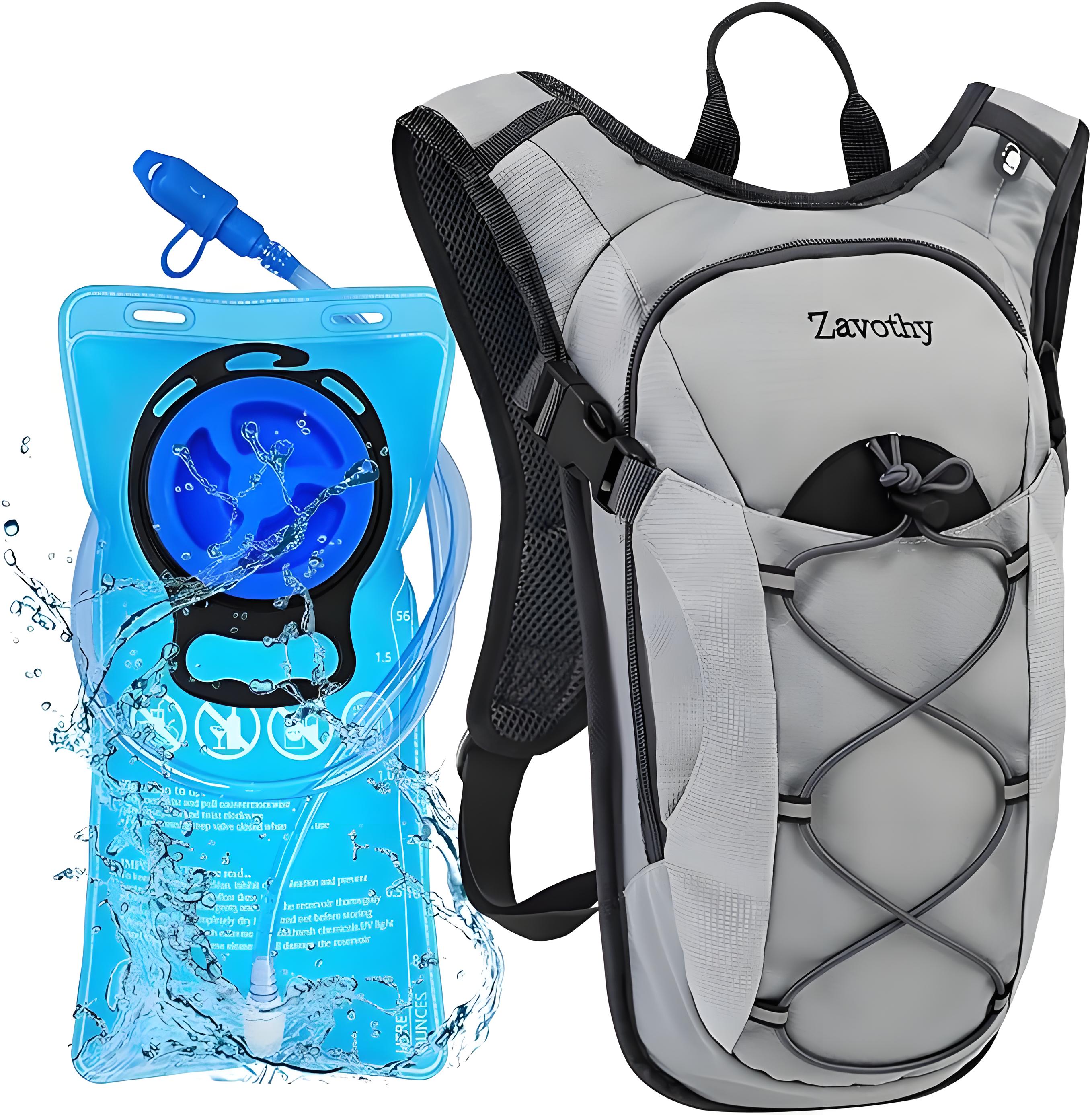
How to Optimize Your Hydration System
Choosing the right bladder size is only half the battle. Here’s how I set up my hydration system to maximize comfort and efficiency during marathons:
1. Test Your Setup in Training
Never try a new bladder or pack on race day. I learned this during a 2021 marathon when my new pack chafed horribly by mile 10. Run at least 2-3 long training runs (15+ miles) with your full setup—backpack, bladder, and any flasks—to ensure comfort and familiarity. Adjust straps to prevent bouncing, and practice sipping from the bladder while running.
2. Balance Weight Distribution
A full 2-liter bladder weighs about 4.4 lbs, which can feel heavy if your pack isn’t balanced. Place the bladder in the pack’s designated sleeve (usually along the spine) and store lighter items (gels, phone) in front pockets. My Salomon ADV Skin 8 has chest straps that I tighten slightly to keep the load stable.
3. Clean and Maintain Your Bladder
Bladders can get moldy if not cleaned properly, which is a health hazard. After every run, I rinse my Camelthru 1.5L bladder with warm water and a drop of dish soap, then hang it to dry with a HydraPak cleaning kit. For deep cleaning, use a mixture of baking soda and water to remove odors. This keeps your water tasting fresh and prevents bacterial buildup.
4. Pair with Electrolytes
Water alone isn’t enough for marathons. I add electrolyte tabs like Nuun Sport to my bladder for races longer than 3 hours to replace sodium and potassium lost through sweat. According to a 2023 study in the Journal of Sports Science, proper electrolyte balance can reduce cramping by up to 30%. I carry tablets in a small zip-lock bag for mid-race refills.
5. Practice Refilling on the Go
If you need to refill at aid stations, practice at home. Most bladders have quick-fill caps or detachable tubes for fast refills. During the 2024 London Marathon, I shaved minutes off my stops by using a Source Widepac 1.5L with a wide-mouth opening, which let volunteers pour water in without fumbling.
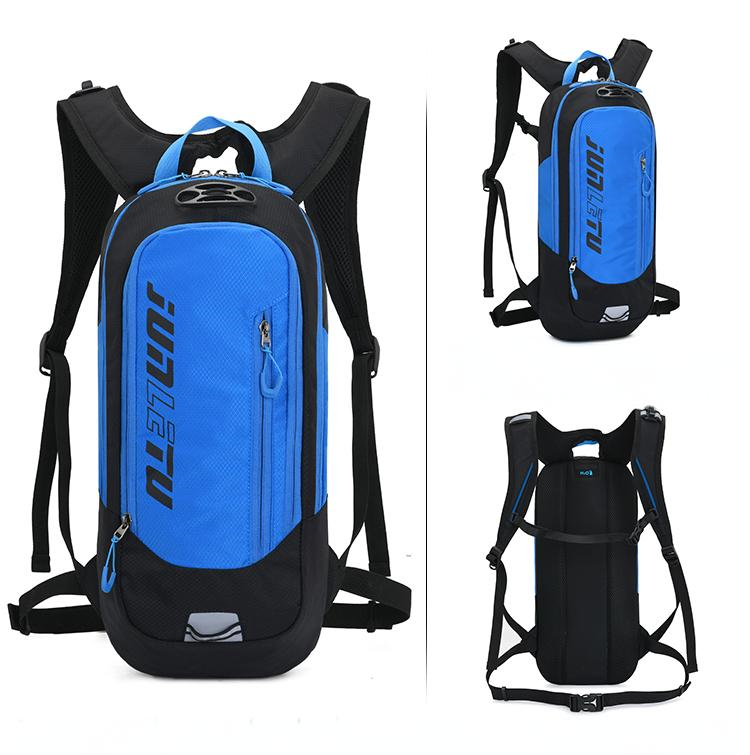
Top Hydration Backpacks and Bladders for 2025
Based on my testing and research, here are some of the best options for marathon runners in 2025:
Salomon ADV Skin 5: A 5-liter vest that fits 1-1.5L bladders. Lightweight (10 oz) and snug, perfect for urban marathons. Pairs well with Salomon’s 1L Soft Reservoir.
Ultimate Direction Marathon Vest: Designed for 1-2L bladders, with front pockets for flasks. Weighs 8 oz and great for trail races.
Camelthru Trail 25k: A 12-liter pack for 1.5-2L bladders. Ideal for longer trail marathons with extra storage for gear.
Osprey Duro 6: A 6-liter pack with a 1.5L Hydraulics bladder included. Comfortable for mid-pack runners.
For bladders, I recommend:
Camelthru Crux 1.5L: Durable, easy to clean, with a quick-release tube.
HydraPak Velocity 1.5L: Lightweight (5 oz) and compact for smaller vests.
Source Widepac 2L: Wide opening for fast refills, great for trail races.
SEO Tips for Finding the Right Gear
As a Google SEO enthusiast, I can’t resist sharing how to find the best hydration gear online. Here’s how to navigate the web like a pro:
Use specific keywords: Search for “best hydration bladder for marathon 2025” or “lightweight running vest reviews” to find up-to-date recommendations.
Trust reputable sites: Stick to trusted sources like Runner’s World, Trail Runner, or REI for gear reviews. These sites rank high for Google’s EEAT criteria.
Check user feedback: Look at Amazon or Reddit (e.g., r/running) for real-world insights. For example, the Salomon ADV Skin 5 has a 4.8-star rating from 900+ reviews on REI’s site (as of 2024).
Monitor trends: Use Google Trends to see what’s popular. Searches for “hydration vest marathon” spiked 25% in 2024 during race season.
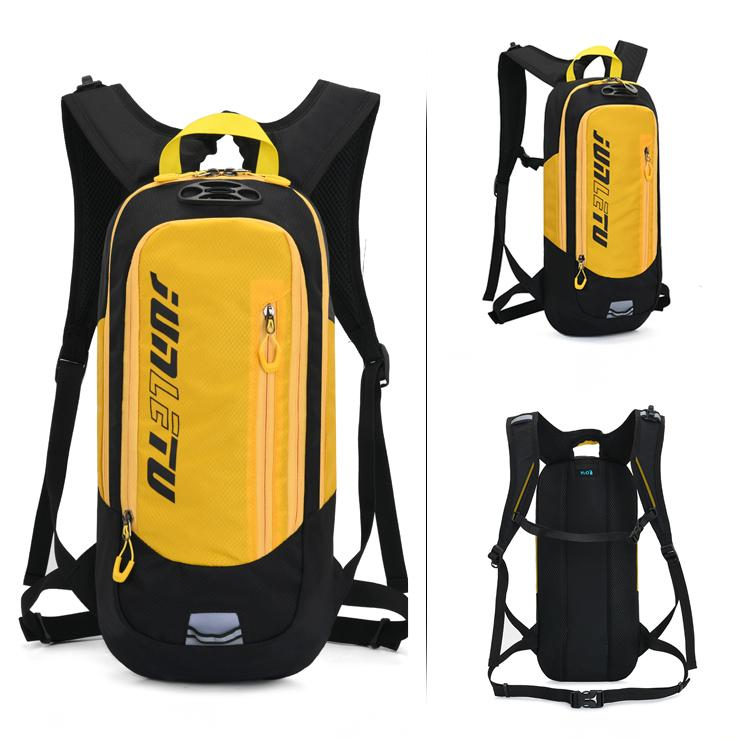
My Marathon Mishap: A Lesson in Hydration
Let me share a quick story from a 2022 trail marathon in Utah. I’d chosen a 2-liter bladder for a race with aid stations 8 miles apart, thinking I was prepared. But I hadn’t accounted for the dry desert heat, and by mile 12, I was out of water, feeling dizzy, and regretting not carrying an extra flask. A kind volunteer at the next station saved me with a refill, but it taught me to always overestimate my fluid needs in harsh conditions. Now, I carry a 1.5-liter bladder plus a 500ml soft flask for insurance, and I’ve never run dry since.
Final Thoughts: Hydrate Smart, Run Strong
Choosing the right hydration bladder size for a marathon comes down to balancing your needs with the realities of the race. For most runners, a 1-1.5 liter bladder is versatile enough for urban and trail marathons, while 2 liters is better for tougher conditions or sparse aid stations. Test your setup, know your sweat rate, and pick a quality pack and bladder that fits your body and running style. With the right gear, you’ll stay hydrated, comfortable, and focused on crossing that finish line.
If you’ve got tips or questions about hydration for marathons, share them below—I’d love to swap stories and advice with fellow runners!
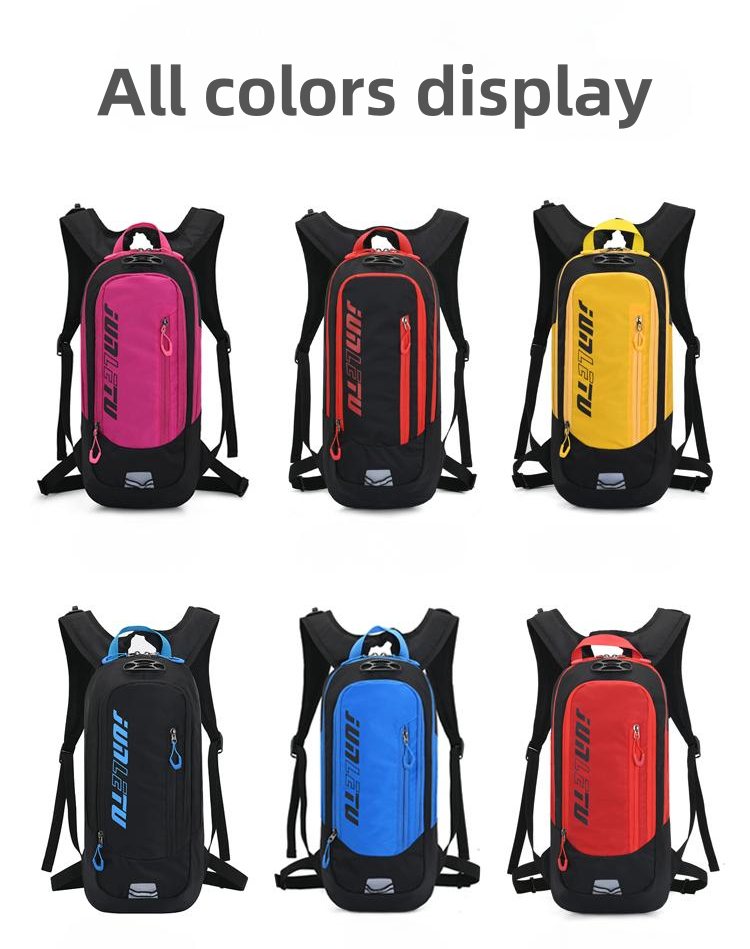
Related Questions and Answers
Q1: Can I use a hydration belt instead of a backpack for a marathon?
A: Yes, belts like the Nathan Peak work for urban marathons with frequent aid stations, but they hold less water (usually 500-600ml). Backpacks with bladders are better for trails or longer gaps.
Q2: How do I prevent my bladder from sloshing while running?
A: Choose a bladder with baffles (like the Camelthru Crux) to reduce water movement. Tighten your pack’s straps and partially fill the bladder to minimize sloshing.
Q3: Are soft flasks better than bladders for marathons?
A: Soft flasks (e.g., HydraPak 500ml) are lighter and easier to refill but hold less water. I use them as a backup with a 1L bladder for flexibility.
Q4: How often should I clean my hydration bladder?
A: Clean after every run with warm water and mild soap. Use a cleaning kit monthly for deep cleaning to prevent mold and odors.